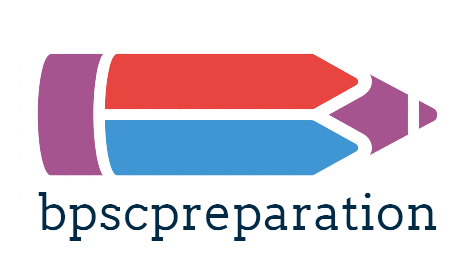The proverb “as one journey ends, another begins” captures the ever-changing tides that mark our life’s endless journey. These are profoundly significant phrases that capture the recurring pattern of our lives. This essay explores the subtleties of commencements and farewells, going deep into the sentiment. Hope you get the most out of- As one journey ends another begins essay in English.

Introduction
A journey is an in-depth expedition across the topographies of experience, involving the exploration of both external and internal worlds. It is an amalgamation of dynamic journey of self-discovery, growth, and metamorphosis rather than a simple distance measured in miles or time. A journey entails a variety of challenges, delights, and discoveries as people move forward.
Main Body of Essay on As one journey ends, another begins
A journey’s end is a complex and frequently bittersweet event. A tangible sense of achievement permeates the air, combined with an appreciation for the milestones attained and the lessons gained along the road. However, there is a hint of contemplation and nostalgia mixed in with this accomplishment. The routine that formerly offered a sense of stability gives way to a new and unpredictable terrain, and the familiar landscapes that have been friends during the voyage abruptly turn into memories.
As the journey comes to an end and a chapter closes, feelings of pride and fulfilment could be accompanied by a sense of loss. It becomes clear that some parts of the experience, whether they are happy moments or sad, will fade into the past. At the end of a journey, it’s like saying goodbye to an old friend. You’re left standing at the crossroads between the past and the future.
But mixed up with all of these feelings is the excitement of a fresh start and the expectation of the next chapter. A journey’s end is always the beginning of a new one, one that holds the possibility of new adventures, uncharted territory, and personal development. The emotional terrain around a journey’s conclusion is defined by a complicated interplay of closure and commencement, nostalgia and expectation.
A journey consists of the following parameters:
- Beginning
- Purpose or Goal
- Challenges and Obstacles
- Learning and Discovery
- Transitions
- Reflection
- Progress and Growth
- Adaptation and Change
- Camaraderie and Relationships
- Culmination
- Legacy
- Possibilities
A journey consists of an ever-changing sequence of stages, beginning with a predetermined destination and an objective that inspires progress. People meet and overcome obstacles along the way, promoting personal development and gaining fresh perspectives. Progress is shown by accomplishments and milestones, and the journey serves as a blank canvas for growth, learning, and self-discovery. It’s crucial to have the flexibility to adjust to unforeseen obstacles and phase changes. Reflective pauses facilitate reflection, allowing people to evaluate their experiences, decisions, and growth. The journey’s complexity is enhanced by the relationships that are forged along the way, whether they be cooperative or trans-formative.
The idea that a journey must come to an end before beginning a new one is based on how experiences and growth naturally lead to one another.
The natural flow of life experiences is rooted in the idea that one journey must come to an end before starting a new one. Above all, the journey’s end provides a feeling of closure, allowing people to take a moment to consider the various experiences, difficulties, and victories they have faced. This introspective break is an essential moment for personal development because it enables people to summarise the lessons they’ve learnt and apply them to how they’re coming to view themselves and life.
In addition, the chronological sequence in which the journey ends and begins makes it easier to take an organised approach to personal growth. Every journey is a chapter in the greater tale of a person’s life, and by completing one chapter before beginning another, people can create a coherent and meaningful life narrative. It enables the efficient distribution of resources—such as time, effort, or concentration—toward the particular aims and objectives connected to each unique journey. The likelihood of success and fulfilment in the pursuit of goals is increased by this planning.
Think about the scenario when a student completes their undergraduate studies and enters the workforce. The conclusion of an important chapter in their lives is represented by the final phase of their academic career. One journey of their life comes to an end as they cross this stage, get their degree, and say goodbye to their well known University campuses.
At the same time, a new journey starts as they enter the workforce equipped with the information and abilities they gained in college. When someone moves from being a student to a professional, it’s the start of a new journey where they must negotiate the opportunities and obstacles of their chosen job profile. They go through a new stage of development as they enter the workforce, form relationships, and use their education in practical settings. the completion of the academic journey serves as the gateway to the professional journey.
However, it is pertinent to note that It is essential to finish one journey before beginning a new one in order to succeed and grow personally. One can think back on experiences, draw lessons from setbacks, and use newfound knowledge in their future undertakings. Sequential attention increases the possibility of accomplishing particular goals linked with each journey, avoids overwhelm, and facilitates the optimal allocation of resources. Facilitating emotional closure makes for a more seamless transition between stages, and strategic planning gains from the clarity that comes from finishing one endeavour before beginning another. The implementation of a sequential method fosters a sense of continuity, identity, and intentional advancement, hence contributing to an individual’s life story framework.
Conclusion
A journey ultimately ends when its intended goal or destination is reached. Beyond the individual, it has a legacy and an impact on communities or the larger context. When people aim for new objectives and dreams, the end of one trip frequently acts as a launchpad for new opportunities. Together, the journey’s high points tell a story of development, resiliency, friendship, and the never-ending search for meaningful experiences.
‘As one journey ends, another begins’ resonates in the never-ending aspect of life as a tune of development and rejuvenation. Every fulfilled journey adds a chapter with lessons learned and memories woven in. By accepting this cycle, we discover that each conclusion serves as a springboard for a fresh experience and an ongoing beat of possibilities just waiting to materialise.

